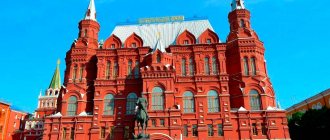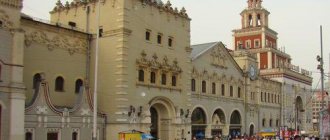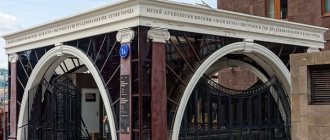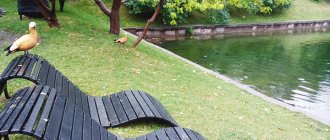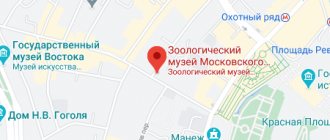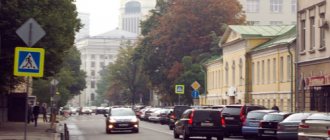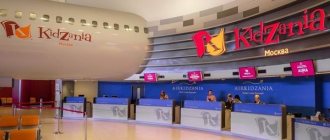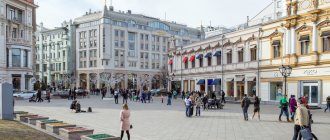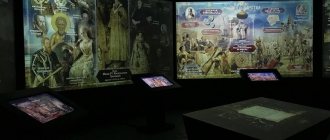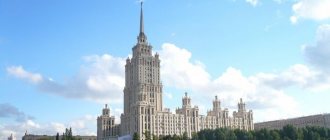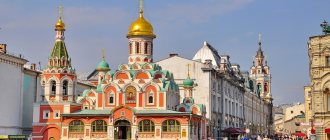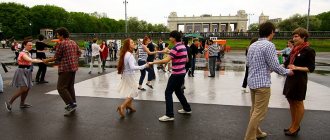There are so many places in Moscow where you can have breakfast, lunch and dinner. Many restaurants and cafes are opening along with hotels. This brings maximum comfort to guests, because they can eat without leaving their accommodation.
The National restaurant in Moscow is located on the ground floor of the hotel. Both hotel guests and ordinary visitors can come here.
Review
The establishment has a total of 13 halls of varying capacities. The maximum number of people in the hall is 80 people. There is a panoramic restaurant, a banquet complex and a hotel restaurant.
The National restaurant in Moscow is an establishment from American films. An ordinary person will most likely even be afraid to come here. There is a receptionist at the entrance who kindly helps open the door.
There is Internet throughout the restaurant, bar and hotel. There is also a grand piano in the main hall and a dance floor. For younger guests there is a separate children's menu.
Restaurant "National" (Moscow): address
There is a phone number on the official website that you can call and reserve a table or room for a specific date. You can also inform the administrator a few hours in advance that you are going to have dinner with them, and they will leave a table for you. The hotel, like the National restaurant in Moscow, is located in the central district on Mokhovaya Street, building 15, building 1. There are three large metro stations nearby: Okhotny Ryad, Ploshchad Revolyutsii, Teatralnaya. Getting to the restaurant is convenient both by your own transport and by public transport. If you don't know where to go in Moscow for the weekend, then you can consider this option for lunch.
Halls
The National restaurant in Moscow looks pretentious both from the outside and from the inside. All the halls are designed in the same style - “royal chambers”. This is a really chic and expensive place, at least in terms of the interior and atmosphere.
Bright rooms with display windows overlooking the Kremlin are the highlight of this establishment. Columns, a lot of lush textiles, white tablecloths and painted napkins with embroidery - you will find all this in the restaurant. And also a lot of chic and shine.
All rooms are luxurious and rich. There is an interior in purple and red tones, there is a room with airy white chairs and tables - all of them are ideal for both celebrations and family dinners.
Inside the National Hotel: a mirror from the Anichkov Palace and a swimming pool under the roof
The five-star National Hotel overlooking Red Square celebrates its 115th anniversary this year. Over more than a century of history, the National hosted the last Russian Tsar, became a hostel for the Soviet nomenklatura, was the residence of 16 foreign embassies and diplomatic missions, and was also a favorite place for artists, politicians and Hollywood stars. RIAMO correspondents spent the day at the legendary hotel and found out what can be seen from Lenin’s room, where newlyweds like to stay, and what is the secret of the weightless staircase.
Places with history: the “Chaika” swimming pool, where “The Prank” and “Night Watch” were filmed >>
© RIAMO, Alexander Manzyuk
The idea of building the National Hotel arose back in Tsarist Russia, in 1899. In its place then stood old low-rise buildings belonging to the Varvara joint-stock company. Since there was no income from them, and the location was more than attractive, they decided to demolish them and build a first-class hotel, they say on the tour.
© RIAMO, Alexander Manzyuk
The hotel building with restaurants, a reading room, electric elevators, weightless marble stairs and baths in the rooms was built in 1902 according to the design of the St. Petersburg architect Alexander Ivanov.
© RIAMO, Alexander Manzyuk
© RIAMO, Alexander Manzyuk
© RIAMO, Alexander Manzyuk
1 of 3
In the construction of the main staircase, the architect used a new approach - openwork marble steps without stringers, which creates the feeling that they are floating in the air. In fact, the metal structures on which they are attached are hidden in the wall.
At the height of the chimes: what is inside the Kremlin’s Spasskaya Tower >>
© RIAMO, Alexander Manzyuk
From the staircase, the stained glass window today offers a view of the Alexandrovsky bar, but once upon a time there was a utility yard here. The stained glass windows were installed specifically so that it would not be noticeable to visitors.
© RIAMO, Alexander Manzyuk
The hotel opened in 1903 and was immediately included in the list of the city’s main attractions in the “Around Moscow” guide.
At that time, it had 160 rooms, which were intended to accommodate high-ranking foreign guests and representatives of the Russian state and military elite, as well as writers and actors.
© RIAMO, Alexander Manzyuk
© RIAMO, Alexander Manzyuk
1 of 2
At that time, Count Sheremetyev, ballerina Anna Pavlova, French writer Anatole Franz, English writer Herbert Wells and many others stayed at the National.
Places with history: tram depot in Kolomna >>
© RIAMO, Alexander Manzyuk
The ground floor, which today is dotted with restaurants and conference rooms, has always been for rent. For example, at the beginning of the 20th century, half the floor was occupied by the tea merchant Perlov.
© RIAMO, Alexander Manzyuk
The hotel amazed with its luxury from the outside: the facades were decorated with natural stone, ceramic tiles and stucco, the corner attic was decorated with majolica panels.
© RIAMO, Alexander Manzyuk
The interior decoration of the National has hardly changed over the century - at the entrance to the lobby, even today guests are greeted by figures of Atlanteans installed at the entrance to the electric elevators in an ancient frame; a marble staircase leads to the floors, the light of which falls from the stained glass windows. The floor is tiled.
Inside the Ukraine Hotel: Moroccan bedroom and Moscow in miniature >>
© RIAMO, Alexander Manzyuk
On the tour they say that at that time electric elevators with mechanical doors were rare, so they were serviced by a special caretaker and a porter who opened the doors and let visitors into the elevator cabin.
© RIAMO, Alexander Manzyuk
© RIAMO, Alexander Manzyuk
1 of 2
The second floor is also non-residential. Even before the revolution, it was occupied by restaurants, which in Soviet times were named after the cities of the Golden Ring of Russia. Today there are banquet halls and restaurants where fashion shows, photo shoots and weddings are celebrated.
© RIAMO, Alexander Manzyuk
The first hall was “Moskovsky” with the best view of the Kremlin; today it is here that the signature cuisine restaurant of the same name is located.
Inside St. Basil's Cathedral: kaleidoscope ceiling and galleries overlooking the Kremlin >>
© RIAMO, Alexander Manzyuk
Next to it is “Suzdal”, a hall overlooking Tverskaya Street and Okhotny Ryad. On the tour they say that there used to be a restaurant in this room where artists and writers loved to have breakfast. One of these was Andrei Ioganson, who captured the Moscow Hotel under construction; it is this sketch that appears on the label of Stolichnaya vodka.
© RIAMO, Alexander Manzyuk
Another hall with history is “Kostroma”, which in the 30s of the last century was occupied by a children’s room. It has no view, but has a picturesque ceiling depicting children's toys. Once upon a time, teachers worked here, and you could leave your children with them.
© RIAMO, Alexander Manzyuk
But maintaining the decoration and architectural style was not so easy. Due to its location, the hotel has always been at the epicenter of historical events. After the October Revolution of 1917, for 15 years it became the First House of Soviets, where the Soviet government moved, not really caring about preserving the interior of the rooms and furniture. And in the 1930s, the building became the Intourist hotel for foreigners.
Factory "Bolshevik": performances in the confectionery and coffee shop in the boiler room >>
© RIAMO, Alexander Manzyuk
The rooms start from the third floor, the most famous of them being number 107, which was occupied by Lenin and Krupskaya. As befits a suite, the room was two-room, with a dressing room. On the tour they say that one room was occupied by the leader’s wife and sister, and the other with an office was occupied by himself.
© RIAMO, Alexander Manzyuk
Lenin's number is very popular to this day. History buffs, including foreigners, stop here. Lenin's room offers the best view of the mausoleum.
© RIAMO, Alexander Manzyuk
© RIAMO, Alexander Manzyuk
1 of 2
The 101st Presidential Suite, formerly called the Louis XVI Drawing Room, is in demand among newlyweds for photo shoots. Room price per night starts from 58 thousand rubles/day. Since the opening of the hotel, only the fireplace has been preserved. In the 1930s, it was furnished with antiques from different eras to impress foreign tourists. In Soviet times, foreign diplomats, governors and high-ranking members of monarchical families stayed here.
© RIAMO, Alexander Manzyuk
© RIAMO, Alexander Manzyuk
1 of 2
What attracts the most attention is the mirror from the collection of the Anichkov Palace in St. Petersburg, which is two centuries older than the hotel. The rest of the furniture in the room was matched to the mirror - a chandelier made of Kuznetsov porcelain from the late 19th century, an English clock that was in the shape of Samson tearing the jaws of a lion, and candelabra from the early 19th century.
Moscow now and 100 years ago>>
© RIAMO, Alexander Manzyuk
© RIAMO, Alexander Manzyuk
1 of 2
Another VIP room with history is the Presidential Suite 115 with a view of the Kremlin, Alexander Garden and Tverskaya Street, formerly called the “Louis XV Living Room”. At various times, members of royal families, foreign diplomats, Prince Alexander Mikhailovich, Chairman of the All-Russian Central Executive Committee Yakov Sverdlov and others stayed there.
© RIAMO, Alexander Manzyuk
© RIAMO, Alexander Manzyuk
1 of 2
This room has a painted ceiling, a set of Karelian birch, a porcelain vase with a portrait of Napoleon Bonaparte and Josephine Beauharnais, as well as a black salon grand piano, which you can play if you wish.
© RIAMO, Alexander Manzyuk
During the Second World War, the hotel was occupied by leaders of the anti-fascist resistance and representatives of the Red Cross. There was practically no one to service it, since the staff had gone to the front. Therefore, it is not surprising that after the war the building fell into disrepair. But reconstruction had to wait almost 40 years.
© RIAMO, Alexander Manzyuk
The renovated hotel was opened in 1995. Because of the new floors
There are now more than 200 rooms, including 55 suites and more than 30 with views of Red Square.
© RIAMO, Alexander Manzyuk
© RIAMO, Alexander Manzyuk
1 of 2
Under the roof of the hotel there is a gym and a swimming pool overlooking the center of Moscow, which guests can use free of charge. Just hotel visitors can swim with a view of Moscow for 1.8 thousand rubles per day.
From Major to Last: where did the unusual street names in Moscow come from >>
Meat
Chicken is served here in almost all variations. The cost of poultry is up to 600 rubles per serving. More refined beef or veal dishes can, of course, cost a little more.
Fish occupies a special place in the menu of this establishment. Far Eastern halibut with a honey crust, grilled muksun with homemade lecho or Murmansk cod with pomegranate sauce are dishes that all guests simply must try. Fish and seafood cost from 600 to 1300 rubles per serving.
Hotel rooms
The magnificent 6-storey hotel building has 206 rooms, including 56 suites. All rooms have satellite and cable TV and telephones, including bathrooms. Minibar and air conditioning. Hairdryer and trouser press. Modem connection socket. A free newspaper is provided, as well as a robe and slippers. Double-glazed windows installed. Some hotel rooms have views of Red Square and Manezhnaya Square. There is a VIP floor where superior rooms with a range of additional services are located. Most of these rooms are individually designed, while some have unique ceiling paintings. These rooms have a fax and copier, a computer with a printer and a scanner. The apartments and suites have safes.
Standard single rooms have an area from 9.8 to 13.5 sq.m. There is a single bed. The room has a bath, shower and toilet. Standard double rooms have an area from 15.2 to 22.0 sq.m. There is a wide double bed. The room has a bath, shower and toilet.
Studio rooms have an area from 18.5 to 42 sq.m. The room has one wide or two separate beds. One or two extra beds can be added. There is a balcony. The bathroom has a bath and shower, bidet and toilet.
Business apartments with an area of 32-42 sq.m are located on the VIP floor. The room has one wide double bed. One or two extra beds can be added. There is a balcony.
Soups
First courses in the restaurant are served both cold and hot. Everyone chooses something according to their own taste preferences. For example, okroshka, beetroot soup and botvinya with crayfish tails are traditional chilled soups. The same cannot be said about Russian cabbage soup or Ukrainian borscht, which are simply excellent in the restaurant. There is solyanka, ukha, and creamy pumpkin soup. The average cost of a first course is 400 rubles.
Restaurant "National" in Moscow: reviews
The restaurant is located in the very heart of the capital. It is in demand both among hotel guests and city residents. Based on the description of the establishment (it was presented above), it becomes clear that ordinary workers do not come here. This establishment is designed mainly for high society.
Guests' reviews are mixed. Most note the excellent interior, which is difficult to complement with anything. In reviews, guests say that the National, or rather the banquet hall, is ideal for celebrating weddings and birthdays. The halls do not need to be decorated and decorated. They are completely ready to receive guests. A varied cuisine and a variety of drinks allow you to satisfy the tastes of gourmets. But the service suffers a little. Establishments of this type must provide services at the highest level. The waiters in the restaurant do not know the rules of etiquette and communicate rudely.
In reviews, customers say that they stopped by the restaurant for breakfast. A buffet for 2100 rubles is something excellent (as guests write in reviews). A large number of dishes, as well as delicious and aromatic coffee that you can drink as much as you like - all this pleased the visitors. Clients note that the hygiene room here is made in the same style as the halls and looks simply gorgeous.
Breakfast is served in the restaurant until 11:00 on weekends and until 10:30 on weekdays, but after this time guests will not be kicked out of the room. You can sit quietly and enjoy the view from the window with a cup of coffee or tea. Therefore, if you don’t know where to go in Moscow for the weekend, then head to the restaurant at the National Hotel.
Hotel National
Hotel National is one of the oldest operating hotels in Moscow. Located in the very center of Moscow - on the corner of Tverskaya and Mokhovaya streets, next to Red Square, the Kremlin, and the Alexander Garden - it has long become an integral part of the capital's landscape, and its history is closely connected with the history of Moscow itself, and the whole of Russia.
Construction of the National Hotel began in 1900. The project of the hotel building, commissioned by the Varvara Society of Home Owners, was developed by the then famous architect Alexander Ivanov. During the construction of the building, the most modern technologies and building materials were used - reinforced concrete structures, waterproofing. The majestic facades of the hotel were decorated with natural stone, ceramic tiles, stucco, and the corner attic was decorated with majolica panels. The interior decoration of the National was amazing - marble stairs in the lobby, stained glass windows, mosaic floors, figures of Atlanteans installed at the entrance to the elevators.
The hotel rooms were no less luxuriously decorated and furnished. The furniture for them was made to special order, from mahogany, light and stained oak, and other valuable species. The most expensive apartments of the National, such as the Louis XV Drawing Room or the Louis XVI Drawing Room, were located on the third floor and were intended for receiving high-ranking guests. The luxury of the setting was complemented by an exclusive range of amenities and hotel services. Many hotel rooms were equipped with bathrooms and water closets, and all rooms had safes. The National building was heated by the most modern heating system developed at the San Galli foundry. The hotel was fully equipped with telephones, which was also a sign of luxury at that time.
In addition to the rooms, the National building housed a reading room, a restaurant and various hotel services, as well as shops, a bakery and a wine warehouse.
The National Hotel opened in 1903 and immediately gained unprecedented popularity, taking pride of place among the best hotels in Moscow. Accommodation at the National was not cheap, but the hotel rooms were never empty. Rich merchants and large industrialists, foreign diplomats settled here; such prominent figures of Russian culture as Fyodor Chaliapin, Nikolai Rimsky-Korsakov, Ivan Bunin lived here at different times.
The changes that occurred in Russia after the October Revolution of 1917 also affected the fate of the National Hotel. During the October battles in Moscow, the hotel building served as one of the strongholds of the counter-revolutionary forces and was damaged by artillery shelling. After the final victory of the Bolsheviks, all major hotels in Moscow were nationalized. The National Hotel was turned into the “1st House of Soviets,” that is, a hostel for functionaries and officials of the new government. In March 1918, after the capital was moved to Moscow, members of the Soviet government settled in the luxurious rooms of the National. Dzerzhinsky, Sverdlov, Trotsky lived here, and Lenin and Krupskaya lived in room 107 for a short time. The room was furnished with upholstered furniture in green tones, on a massive desk covered with green cloth, there were black marble inkwells with paperweights, two bronze candlesticks and a bronze lamp with a green lampshade. The room was illuminated by a bronze three-armed chandelier. Some details of this situation have survived to this day.
After the Soviet government moved to the Kremlin, the National Hotel remained for a long time a hostel for the All-Russian Central Executive Committee. The consequences of this became clear in the early 1930s, when it was decided to return the hotel to its former functions. During the inventory, it turned out that most of the hotel interiors and furniture had fallen into disrepair, and engineering and technical communications were significantly worn out. The National building underwent a major overhaul. The appearance of the hotel changed: the lower floors, lined with granite, sandstone and red brick, were repainted to resemble granite, the oak frames were replaced with aluminum frames, and instead of majolica panels, an industrial landscape in the spirit of the times appeared on the corner attic of the building. The furniture for the National's rooms was taken from the reserve fund created during the nationalization of noble estates. This is how furniture and art objects from the Anichkov and Tsarskoye Selo palaces appeared in the hotel environment. “National” turned into a kind of “museum”, which immediately affected the cost of living in the hotel - even foreign tourists could not afford to stay in its rooms. In subsequent years, the National acquired a reputation as an unprofitable hotel. Several times - both in the 1950s and 1960s - attempts were made to modernize and re-equip the hotel building, but they were not very extensive - repair of roofs and electrical wiring, restoration of individual antique furnishings, internal reconstruction of the building. True, in 1974, the National Hotel was included in the list of historical and cultural monuments protected by the state - but not because its building was an architectural monument in the Art Nouveau style, but because Lenin once lived here. The dilapidation of the building and the lack of modern equipment practically deprived National of its former popularity.
Serious changes in the fate of the hotel began only in 1985, when the decision was finally made to completely restore the National. Some of the antique furniture, recognized as a national treasure, was transferred to museums for storage, the rest was taken out for restoration, and then used in the design of the hotel’s interiors. Based on the results of a competition held in 1990, the general contractor was selected - Austrian. On the Russian side, specialists from the Moscow department for the design of public buildings and structures, Mosproekt-2, took part in the restoration of the National.
Work to revive the National Hotel was carried out in three main directions - repair and redevelopment of the building, modernization of hotel equipment, renovation of interiors. Another floor was added to the northern façade of the building to house a health center, the attic was turned into an attic with twenty additional rooms, and the former courtyard was covered with a glass roof and a café with a winter garden was installed there. At the same time, Austrian designers developed furniture in the Art Nouveau style for National and designed interiors. New chandeliers were made, repeating to the smallest detail the design of the first, pre-revolutionary National lamps.
The revived National welcomed its first guests in 1995. In the same year, by decree of the President of the Russian Federation, the hotel building was classified as a historical and cultural monument of the city of Moscow of federal significance. Thus began a new stage in the history of National. From the very opening, the hotel was awarded the highest category - five stars. In the new look of the National, modern hotel equipment was combined with a carefully restored atmosphere of antiquity. Many rooms retained the interiors of the early 20th century and were furnished with antique furniture; engravings and prints with views of old Moscow and paintings written in the spirit of Russian realism appeared on the walls of the hotel. The new National quickly gained popularity among guests of the capital, acquiring a reputation as a prestigious and exclusive hotel. By 2000, when the oldest hotel in Moscow solemnly celebrated its centenary, it could already be said that the project to revive the National was an undoubted success.
The mourning date in the more than century-long history of the National Hotel was December 9, 2003. On this day, a terrorist attack was committed near the hotel. In the explosion of a Mercedes parked at the entrance to the hotel, six people were killed, including both Chechen suicide bombers, and twelve more people were injured of varying severity. The blast wave broke several windows on the first and second floors of the hotel. In June 2005, a memorial sign dedicated to the victims of the terrorist attack was unveiled at the National Hotel. A spark is carved on a black marble cube and the names of the victims are written. The inscription on the monument reads: “Eternal memory to the victims of the terrorist attack on December 9, 2003.”
Nowadays, the National Hotel has firmly taken its place of honor among the best five-star hotels in the world. National's achievements have been repeatedly awarded an honorary diploma and a Diamond Star from the US Academy of Hospitality - the most prestigious award in the global hotel business. “National” is part of the group of the most fashionable hotels of the European hotel chain “Le Meridien” - “A Royal Meridien Hotels”, but at the same time remains a 100% municipal hotel and is serviced exclusively by Russian staff. The general director of the hotel, Yuri Podkopaev, who has led the National since 1985, has twice been awarded the title of one of the best hoteliers in the world.
Booking the National Hotel
